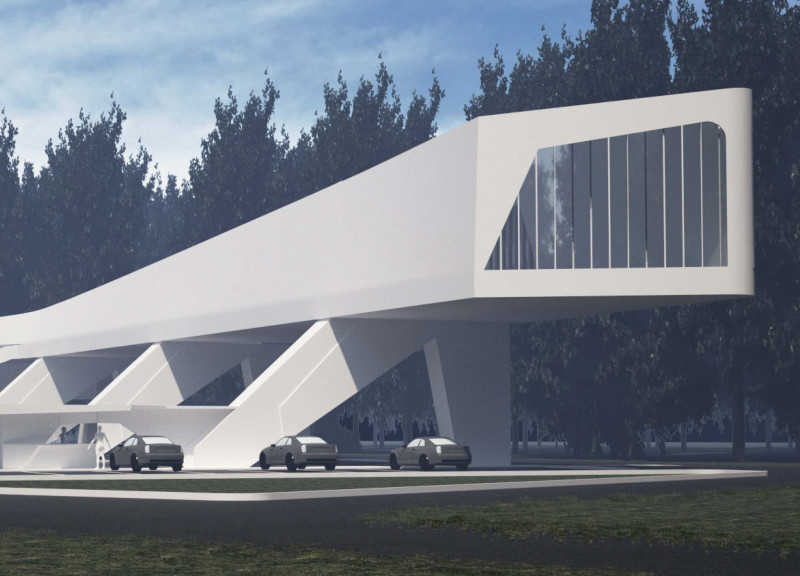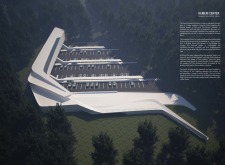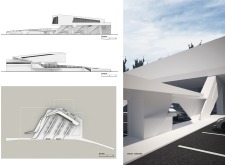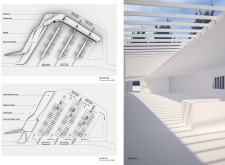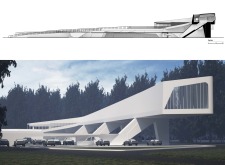5 key facts about this project
The Great Kemeri Bog Visitors Center is located in Pavasari, Sala Parish, Latvia. It serves as an important starting point for visitors looking to explore the natural landscape of Kemeri Park. The design promotes interaction with the environment, creating a journey that mirrors the undulating forms of the park. The overall concept aims to provide a welcoming space that transitions smoothly from parking areas to various engaging facilities.
Design Concept
The building features a large volume that appears to float above the ground. This elevates the structure, reinforcing a connection between the building and its surroundings. By lifting the design off the ground, the architects intend to enhance the visitor experience. As visitors enter, they follow a pathway that leads them downward, encouraging exploration while enjoying views of the landscape.
Circulation and Access
Circulation is a key element in the design. The roof has a slanted form that doubles as a ramp, making it easier for people to access the upper level and guiding them back down through the space. The location of entry points in the parking lot simplifies access. A ticketing booth is conveniently placed next to the escalator, ensuring visitors can quickly begin their experience.
Programmatic Elements
Public spaces are primarily located on the exterior of the building. This choice allows the interior to focus on research facilities, creating a functional balance between community engagement and scientific study. The roof area serves as a transition to the bog while also housing important components of the visitor center, blending education with exploration.
The design reflects a commitment to harmonize with nature. This is evident in the way the structure flows into the landscape, enhancing the experience for visitors. The careful arrangement of spaces not only supports educational purposes but also invites people to engage more deeply with the natural world around them.


